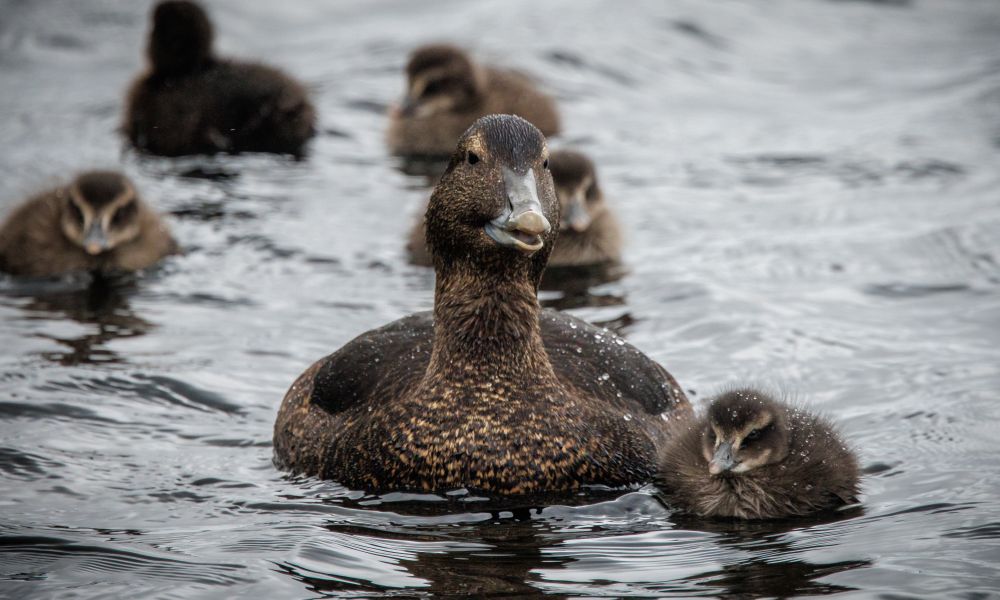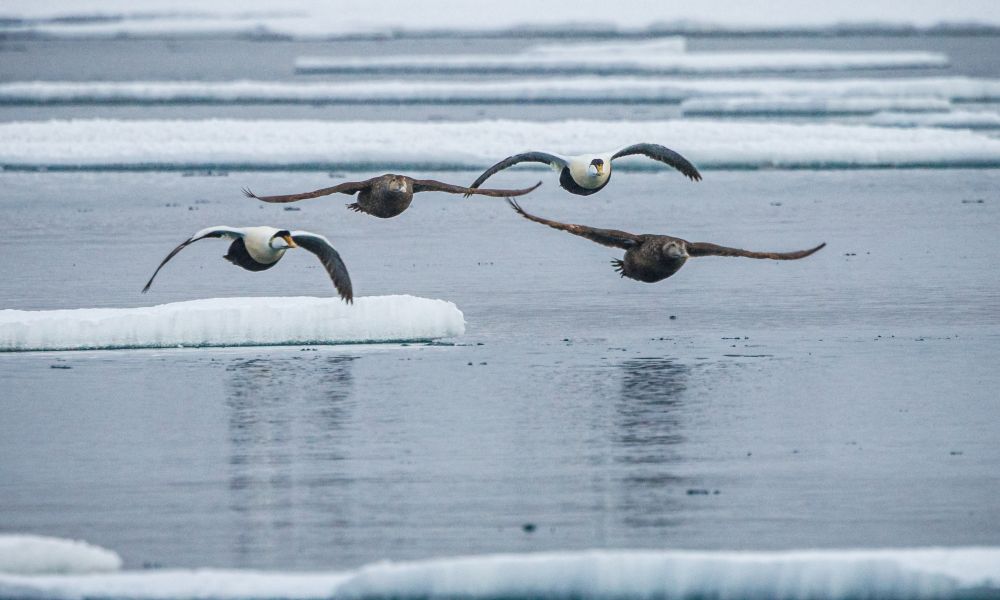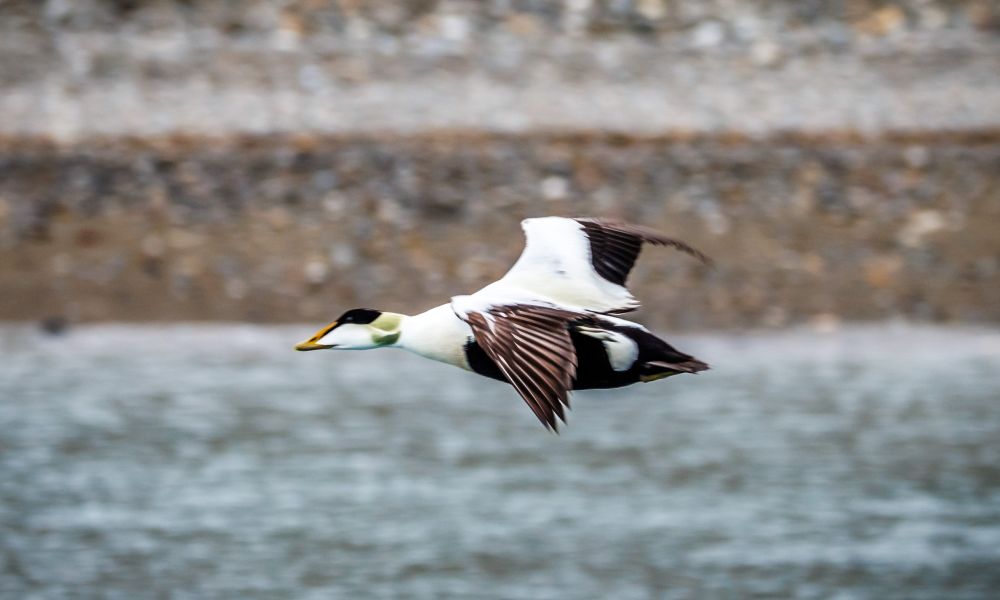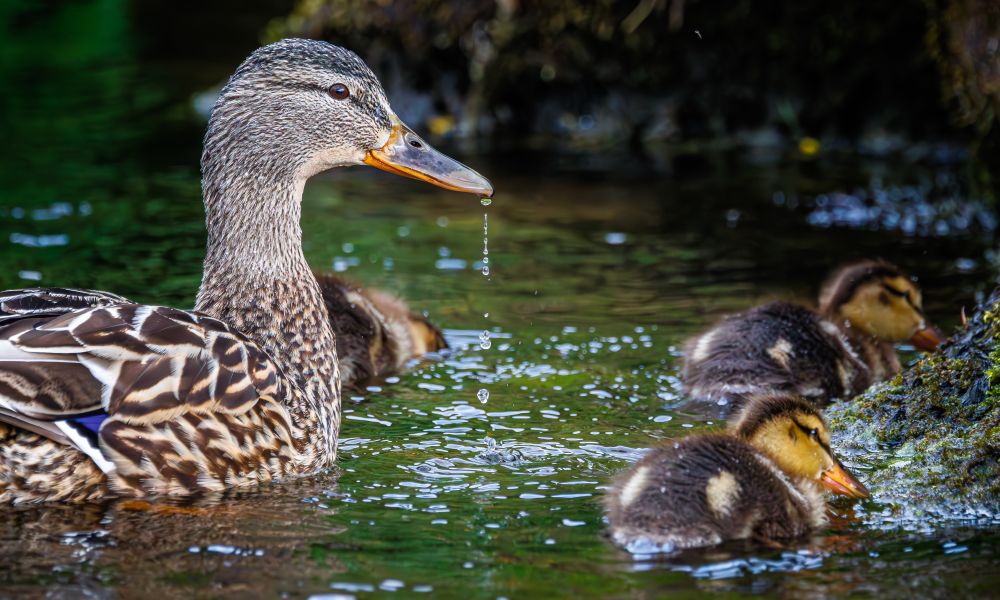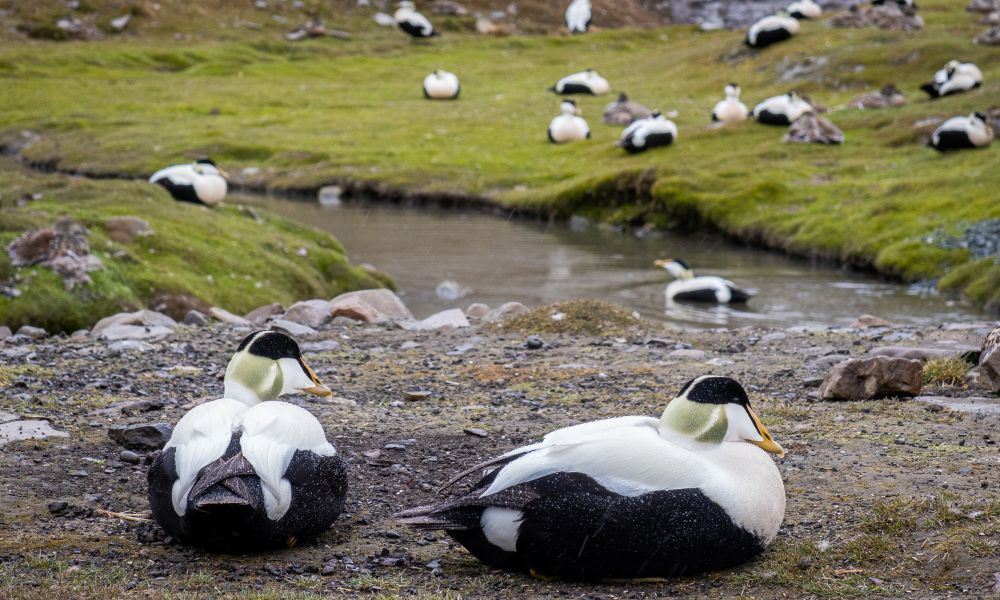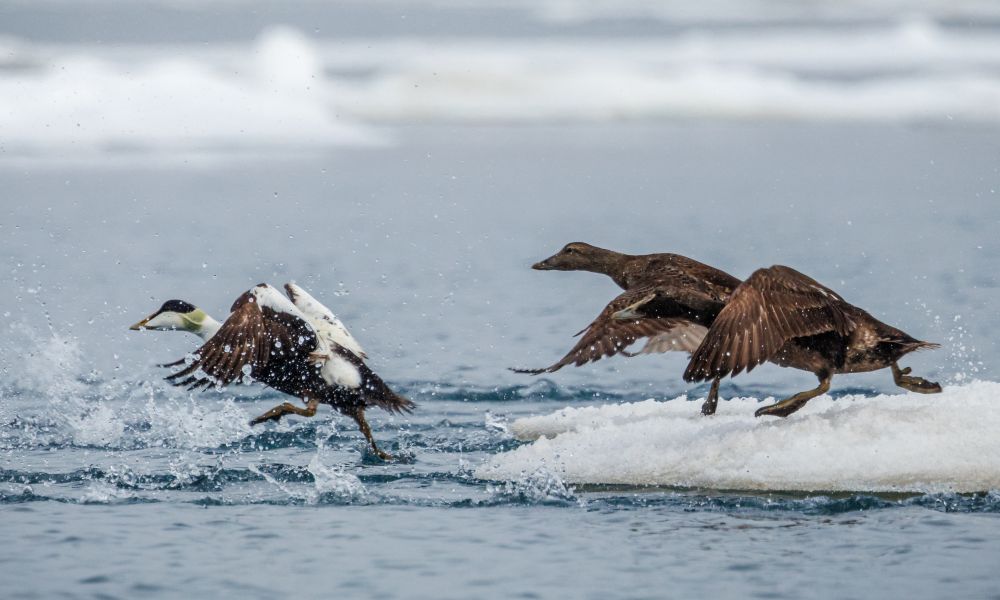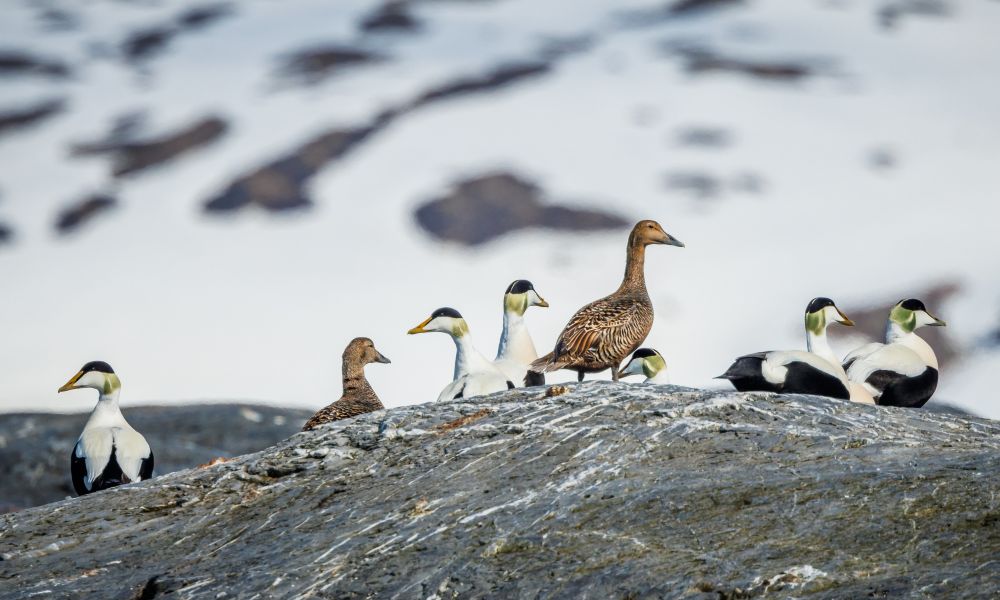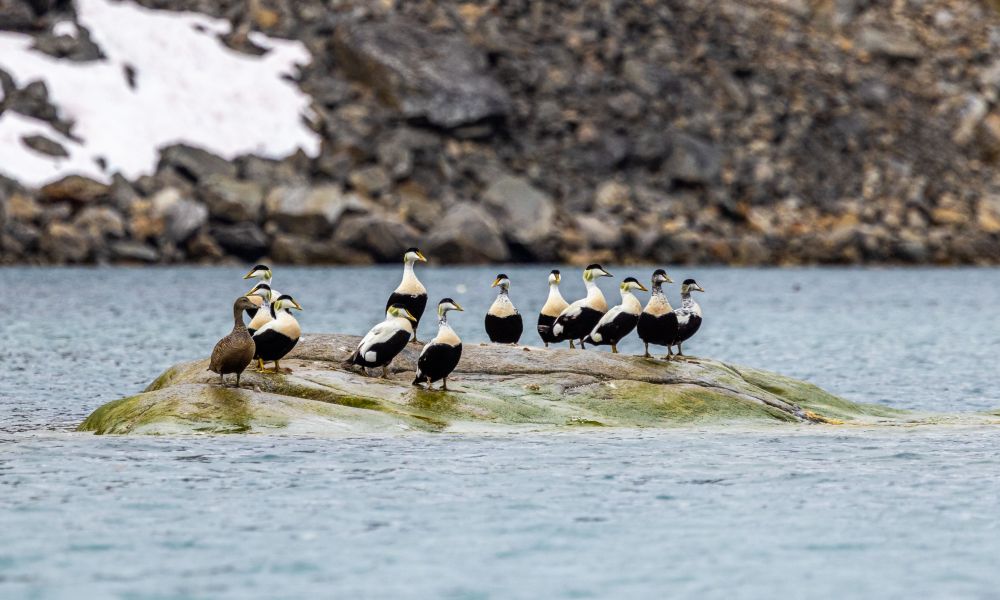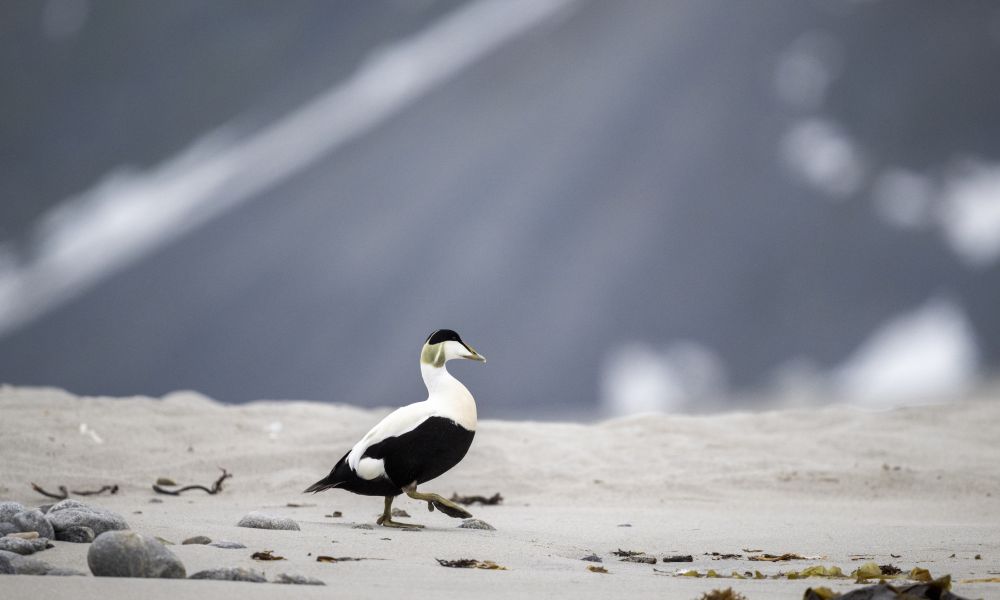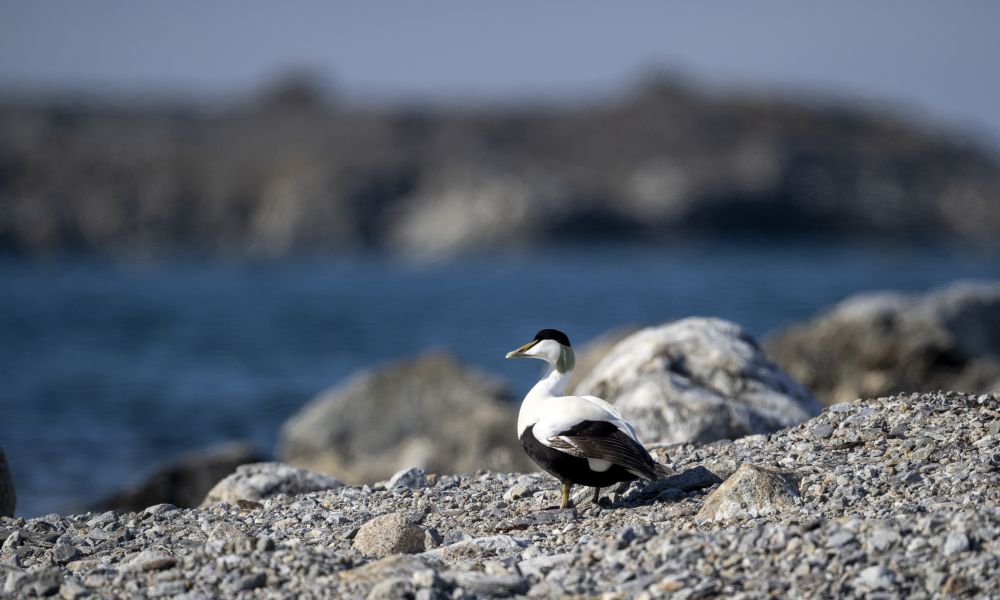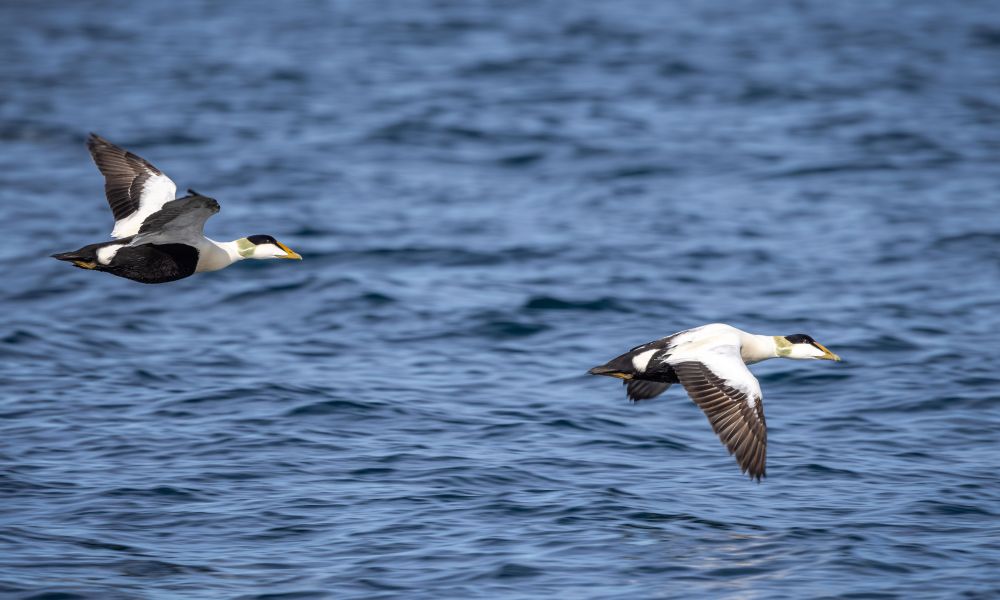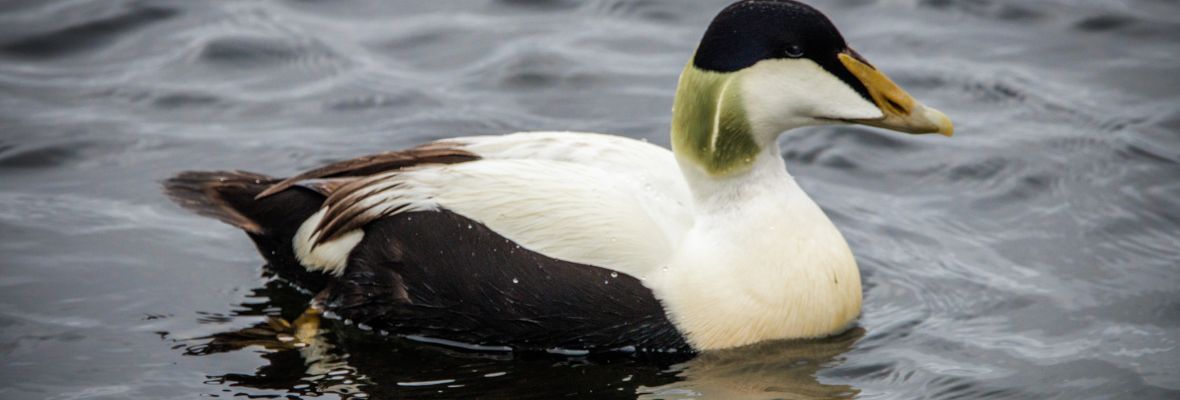Common Eider
The common eider is easy to spot: males are boldly black and white, while females are brown and camouflaged.
Facts about Common Eider
- Arctic
- Canada
- Greenland
- Iceland
- Jan Mayen
- Svalbard
- Europe
- Denmark
- England
- France
- Norway
- Scotland
Scientific Name: Somateria mollissima
Population: Estimated at close to 2 million globally
Regions: Arctic and North Atlantic coasts
Destinations: Jan Mayen, Iceland, Canada, Svalbard, Greenland, Denmark, France, Norway, England, Scotland
Average Length: Adult: Males: ~0.58–0.71 m (1.9–2.3 ft), ~0.50–0.63 m (1.6–2.1 ft); Newborn: ~6–7 cm (0.2 ft)
Average Weight: Adult: Males: ~2.3–3.0 kg (5.1–6.6 lbs), Females: ~1.2–2.1 kg (2.6–4.6 lbs); Newborn: ~0.05 kg (50 g / 0.11 lbs)
Diet Habits: Primarily mussels, snails, crustaceans
Kingdom: Animalia
Phylum: Chordata
Class: Aves
Order: Anseriformes
Family: Anatidae
Genus: Somateria
Species: Somateria mollissima
English: Common Eider
Danish: Edderfugl
Chinese: 普通绒鸭
Swedish: Ejder
Finnish: Haahka
Norwegian: Ærfugl
Polish: Eider
Japanese: ホンケワタガモ
Spanish: Eider común
French: Eider à duvet
Unlocking the Secrets of the Common Eider
Where does the common eider duck live?
The common eider duck is widespread across the Arctic, where it consistently breeds near the coast and frequently on small islands. With Albatros Expeditions, you can see a common eider flying in destinations from Canada and Greenland to Iceland, Svalbard, and northern Europe!
What does a common eider look like?
The common eider drake (male) in summer has a black stomach, tail, and wing tips, a white back, cream-coloured breast, and a large bright green nape, while the head is white with a black cap and a yellowish-green, wedge-shaped beak. In contrast, the female common eider is mainly brown with numerous small black spots, a narrow white wing band, and a light tip to the beak.
How big is a common eider?
Considered one of the largest ducks in the Northern Hemisphere, the male common eider can weigh up to 3 kg and reach a length of 71 cm. Female common eiders are smaller, weighing approximately 2 kg and measuring up to 63 cm long.
What does the common eider eat?
As an expert diving duck that usually feeds on the seabed, the common eider's diet consists mainly of animals such as crustaceans, snails, and especially mussels.
Can the common eider fly?
Yes, common eiders are capable of flying. Their flight is swift but characterised by relatively heavy and slow wing strokes for a duck.
King Eider vs Common Eider: What’s the difference?
These are two different species of sea ducks, and the most noticeable difference is the king eider's unique colourful head with an orange shield on the bill, unlike the common eider, which has a longer, wedge-shaped bill. As for similarities between the two, they have salt-excreting glands over the eyes, from which they can expel excess salt absorbed from seawater, allowing them to digest it. As a consequence, these two species are among the most well-adapted to live in a marine environment.
What’s the difference between a male and female common eider?
Common eider females and males have very different plumage. Females are brown and speckled, which is ideal for hiding while incubating the eggs. As for male common eider, he is colourful during the breeding season, with black, white, green, and cream tones.
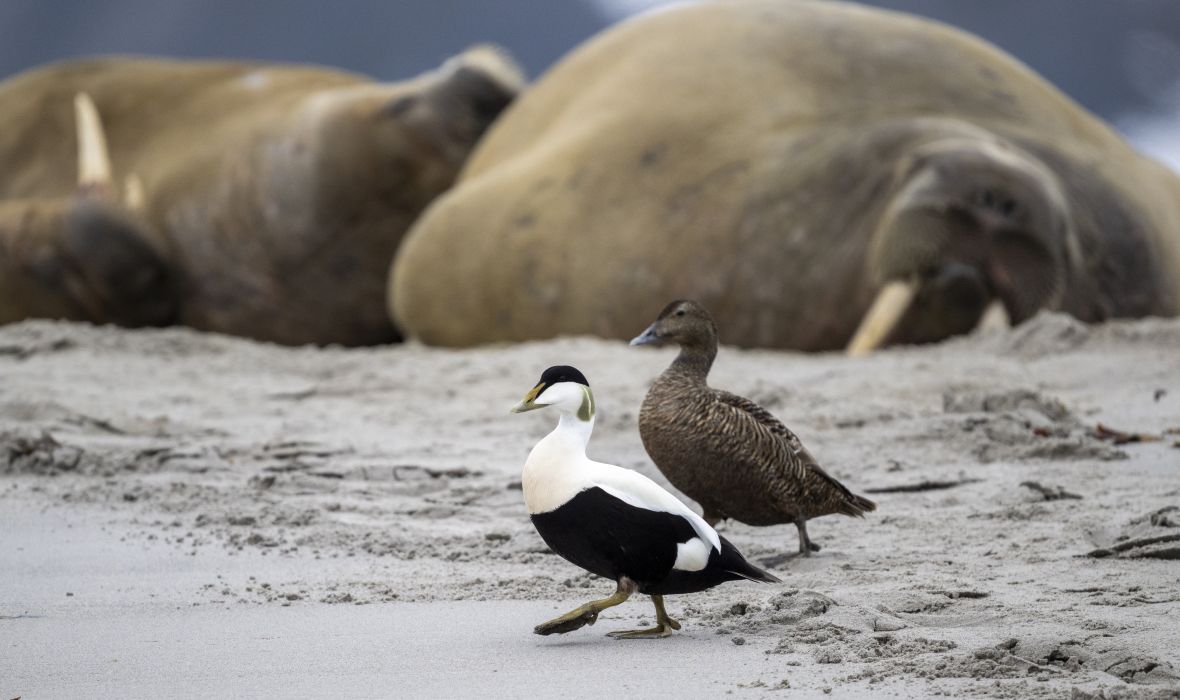
How Many of These 10 Common Eider Facts Did You Already Know?
Common Eider Fact #1:
The common eider ranges areas from the Arctic to the North Atlantic coasts.
Common Eider Fact #2:
During summer, the common eiders moult all their flight feathers simultaneously and temporarily lose their ability to fly.
Common Eider Fact #3:
The drakes are significantly less colourful and camouflaged.
Common Eider Fact #4:
The common eider is listed as ‘Near Threatened’ by the IUCN.
Common Eider Fact #5:
Common eider threats include gulls (such as glaucous gull and great black-backed gulls), arctic foxes, and polar bears.
Common Eider Fact #6:
Female common eiders form colonies with as many as 100 chicks following her!
Common Eider Fact #7:
If you look closely, the male common eider's feather has an unexpected colour: green!
Common Eider Fact #8:
Common eiders are incredible divers when searching for food.
Common Eider Fact #9:
When incubating eggs, which usually last 25 days, female common eiders do not eat during this period.
Common Eider Fact #10:
Common eiders possess salt glands enabling them to drink saltwater.
Join on an Arctic adventure with Albatros Expeditions and witness the wonders of Arctic wildlife!
